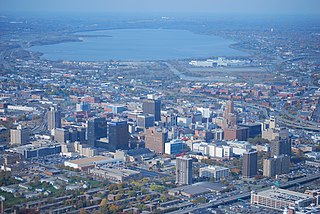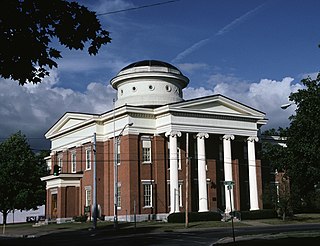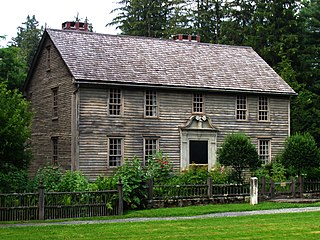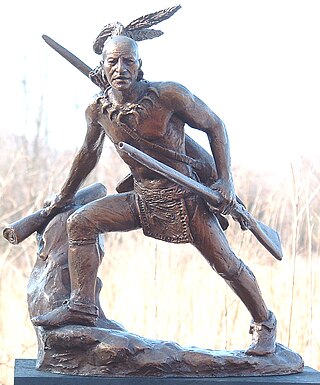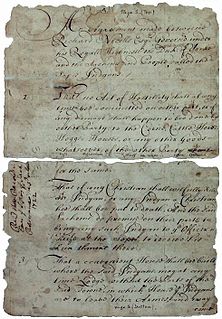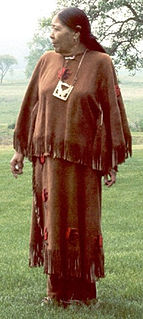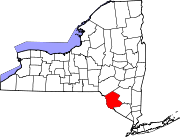| Total population | |
|---|---|
| 1,565 [1] | |
| Regions with significant populations | |
| Languages | |
| English, (originally Mahican and Munsee) | |
| Religion | |
| Moravian Church, Christian | |
| Related ethnic groups | |
| Lenape, Mahican, Pequot |
The Stockbridge-Munsee Community also known as the Mohican Nation Stockbridge-Munsee Band is a federally recognized Native American tribe formed in the late eighteenth century from communities of so-called "praying Indians" (or Moravian Indians), descended from Christianized members of two distinct peoples: Mohicans from the praying town of Stockbridge, Massachusetts, and Munsees. Their land-base, the Stockbridge-Munsee Indian Reservation, is 22,000 acres located at 44°53′55″N88°51′42″W / 44.89861°N 88.86167°W in Shawano County, Wisconsin. It encompasses the towns of Bartelme and Red Springs. [2] Among their enterprises is the North Star Mohican Resort and Casino.
Praying Indian is a 17th-century term referring to Native Americans of New England, New York, Ontario, and Quebec who converted to Christianity. Many groups are referred to by this term, but it is more commonly used for tribes that were organized into villages. These villages were known as praying towns and were established by missionaries such as Puritan leader John Eliot, and Jesuit missionaries St. Regis and Kahnawake and the missionaries among the Huron in western Ontario.
Praying towns were developed by the Puritans of New England from 1646 to 1675 in an effort to convert the local Native American tribes to Christianity. The Natives who moved into these towns were known as Praying Indians. Before 1674 the villages were the most ambitious Christianization experiment in English colonial America. John Eliot first preached to the Natives in their own tongue in 1646 at Nonantum, meaning "Place of Rejoicing," which is now Newton, Massachusetts. This sermon led to a friendship with Waban, who became the first Native American in Massachusetts to convert to Christianity.

Stockbridge is a town in Berkshire County in western Massachusetts, United States. It is part of the Pittsfield, Massachusetts, Metropolitan Statistical Area. The population was 1,947 at the 2010 census. A year-round resort area, Stockbridge is home to the Norman Rockwell Museum, the Austen Riggs Center, and Chesterwood, home and studio of sculptor Daniel Chester French.
Contents
- History
- 17th-19th Centuries
- Indian Termination
- Land issues and claims
- Other land claims cases
- In popular culture
- Notable tribal members
- See also
- References
- External links
In settlement of a large land claim in New York, where the tribe had occupied land in the late 18th and early 19th centuries, in 2010 the state of New York agreed to give the tribe 330 acres in Sullivan County in the Catskills and two acres in Madison County (their former territory). This was in exchange for dropping their larger claim for 23,000 acres of land in Madison (near the city of Syracuse), which they had occupied in the early 19th century. The state granted the tribe the right to develop the Catskills property as a gaming casino. The deal is controversial and opposed by numerous interests, including other federally recognized tribes in New York. The tribe dropped their bid for a gaming casino in New York in June 2014, given a high level of competition from other developers for sites in Orange County, which is closer to the metropolitan market. Another land claim was dismissed by the 2nd Circuit Court of Appeals in June 2014.

New York is a state in the Northeastern United States. New York was one of the original Thirteen Colonies that formed the United States. With an estimated 19.54 million residents in 2018, it is the fourth most populous state. To distinguish the state from the city in the state with the same name, it is sometimes called New York State.

Sullivan County is a county in the U.S. state of New York. As of the 2010 census, the population was 77,547. The county seat is Monticello. The county's name honors Major General John Sullivan, who was a hero in the American Revolutionary War.
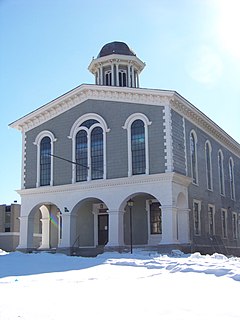
Madison County is a county located in the U.S. state of New York. As of the 2010 census, the population was 73,442. Its county seat is Wampsville. The county is named after James Madison, fourth President of the United States of America, and was first formed in 1806.


